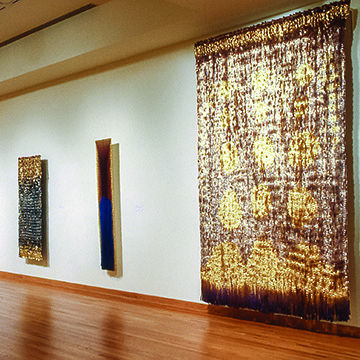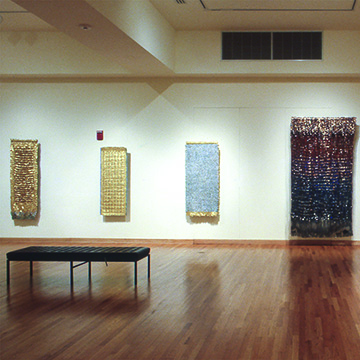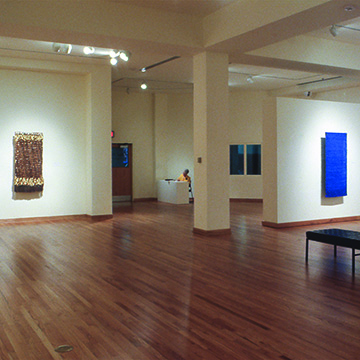Olga de Amaral · Lost Images, Inherited Landscapes
Internationally renowned Colombian weaver Olga de Amaral has produced an incredible body of work during the past 40 years - work that has extended the limits of weaving and elevated it to an art form evoking feelings of tranquility. Utilizing a superb staff of weavers and assistants, de Amaral has been able to work quickly and explore many concepts, often at the same time. Starting in the '80s, de Amaral began experimenting with gold leaf and gesso, producing large wall hangings that evoke an almost sacred atmosphere.
That period, which is among those to be displayed at JCCC, harkens back to pre-Columbian South America when artisans worked with gold, making breastplates, altarpieces, and extravagant picture frames.
In a field dominated by Americans, European and Japanese, de Amaral has gained international recognition. Since her work was discovered in 1964, she has exhibited all over the world. Her pieces are in public collections from the Metropolitan Museum of Art in New York to the National Museum of Modern Art in Kyoto, Japan.
Charlotte Kornstein of the Bellas Artes Gallery in Santa Fe, New Mexico, an authority on de Amaral's work, will lead a gallery walk through the exhibition at 3:30 Sunday, May 31.
Olga de Amaral was born in 1932 in Bogota, Colombia. In 1951 she received a diploma as architectural draftsman from Colegio Mayor de Cundinamarca, Bogota, and was named director. She continued her studies in weaving at Cranbrook Academy of Art in Bloomfield Hills, Michigan. In 1965 de Amaral founded and directed the textile department of the Universidad de los Andes in Bogota.
The gallery guide features the essay “Lost Images, Inherited Landscapes” by Mildred Constantine, New York.
We are deeply grateful to Olga de Amaral for her generous and considerate assistance with this exhibition. Several works were completed specifically for the exhibit, and for this, we are particularly appreciative. Charlotte and Bob Kornstein of Bellas Anes Gallery, Santa Fe, New Mexico, are to be thanked for their unflagging support of de Amaral's work and this show. Their knowledge of and insight into her work has been most important. Finally, our gratitude goes to Mildred Constantine for her fine essay on de Amaral's work, as well as her longtime commitment and numerous contributions to the appreciation and understanding of textiles.





